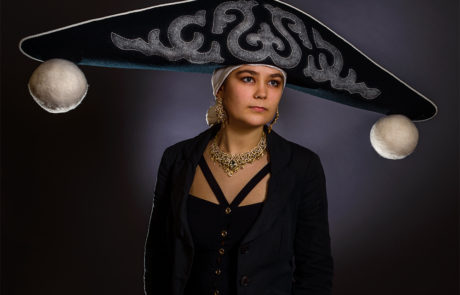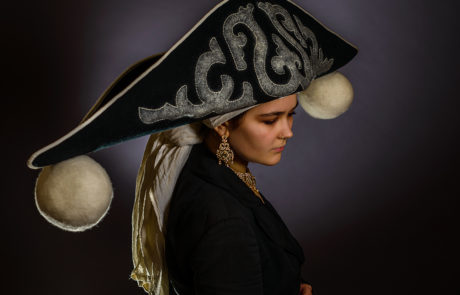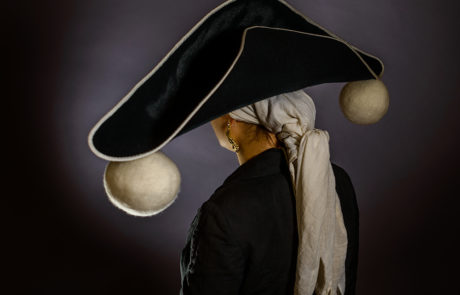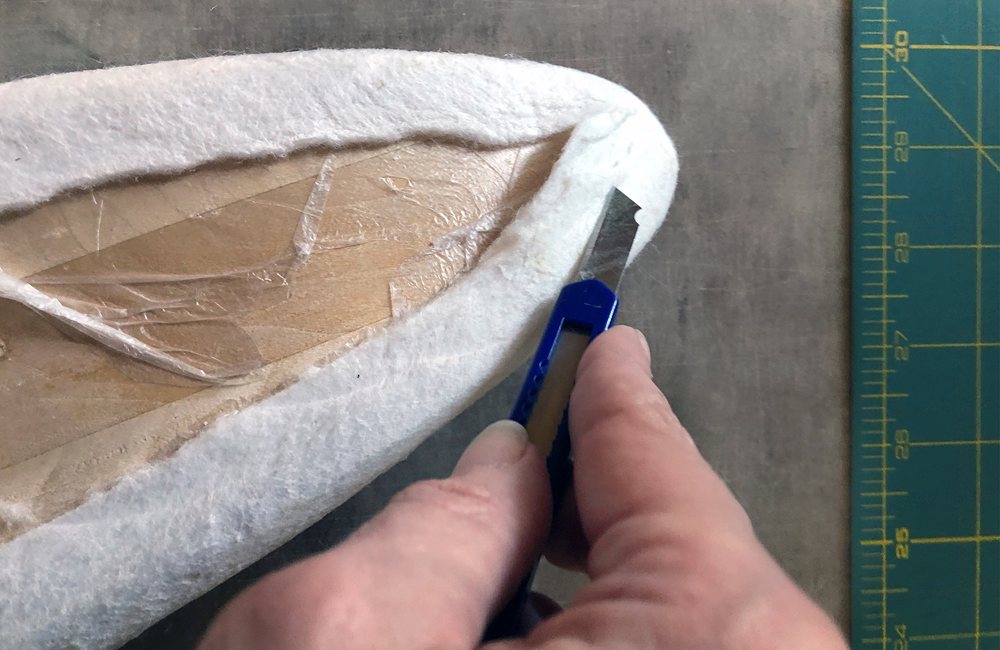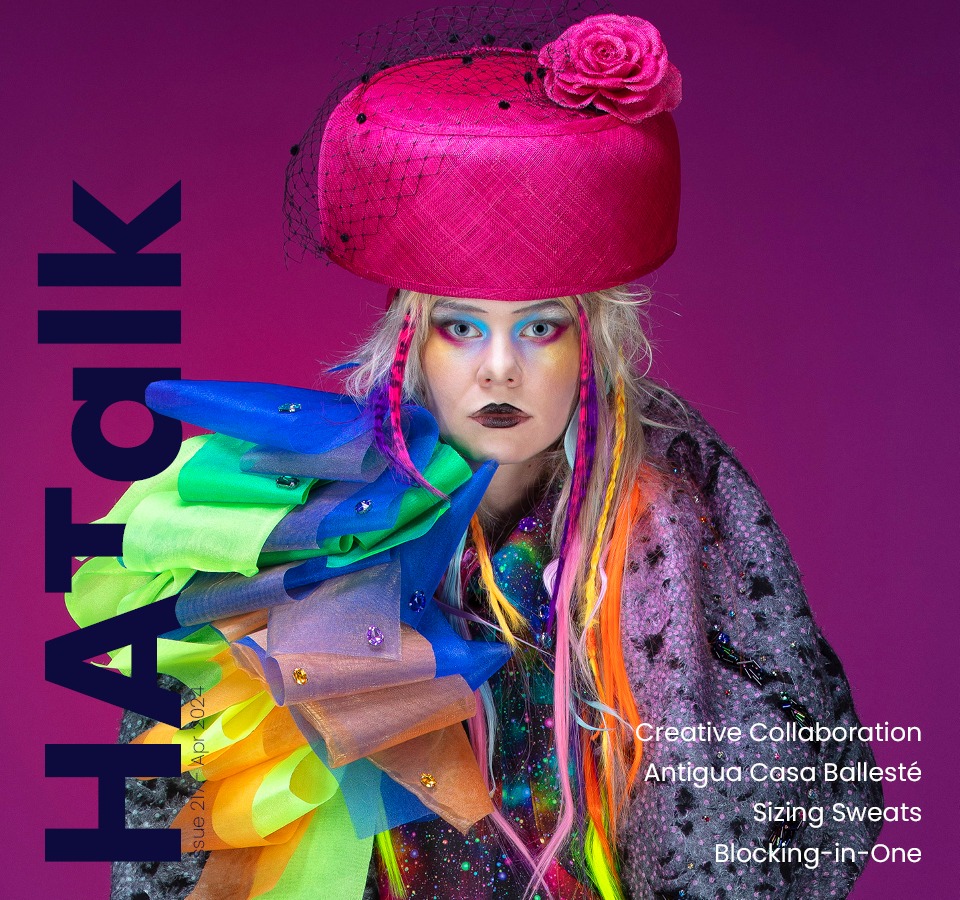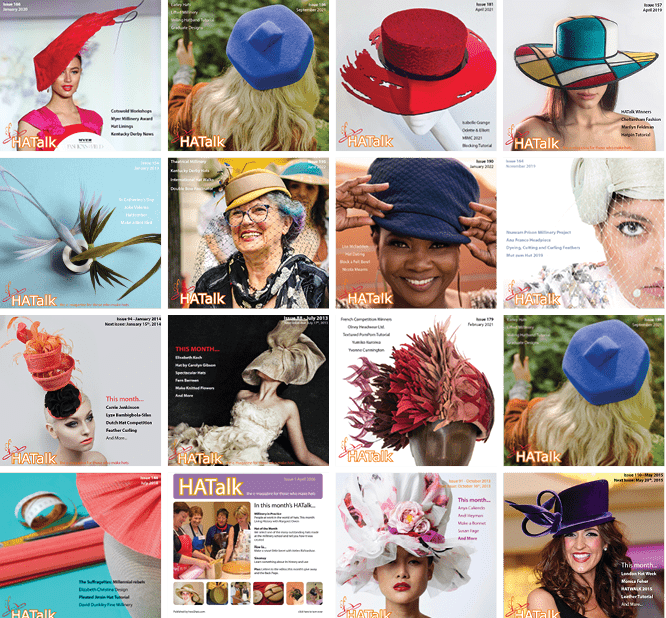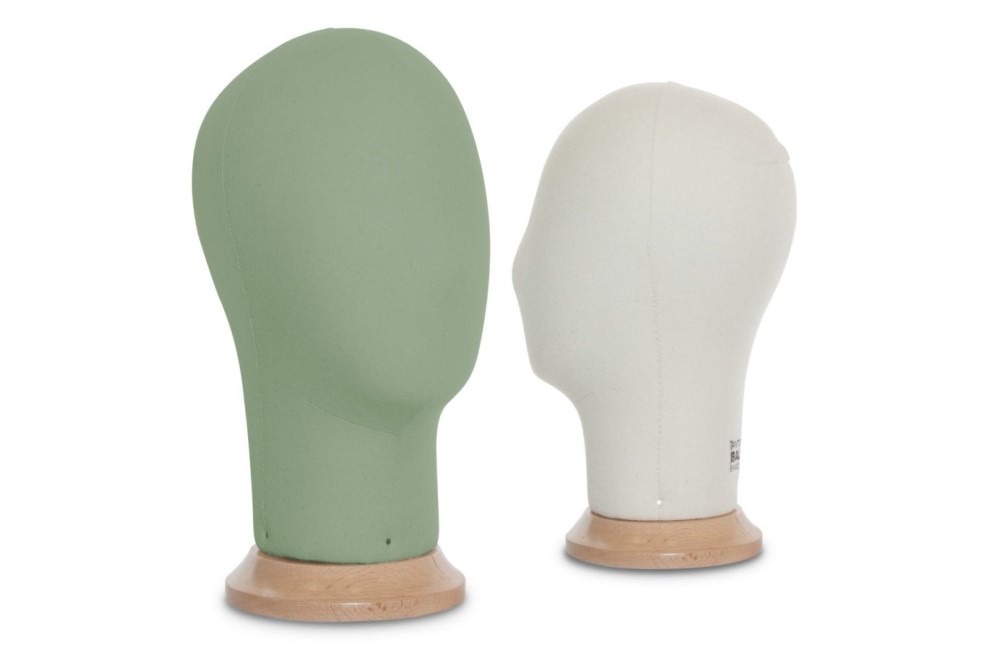2019 HATalk Competition Entry
Rachel Frost
Rachel Frost – Scotland
La belle de la balance
Description
I have chosen to approach at the theme ‘Equilibrium’ in the context of balance; both physically and aesthetically.
I take my influences from hat styles of previous centuries. This hat is inspired by the ‘Bicorn’ worn in Nicolas de Largilliere’s portrait ‘La Belle Strasbourgeoise.‘ This unusually extreme hat style immediately reminded me of old fashioned balance scales, with the head as the pivotal point. I was excited by the challenge of making such a large hat and by the opportunity to advocate the versatility of hand-made felt.
The inlaid design is based on those found on ‘Shyrdak’ felt carpets from Kyrgyzstan. These traditional patterns are carefully designed to create an equal balance between the negative and positive, so as to enable the design to work equally well in reverse.
I have chosen to use the colours black and white throughout the hat to represent a balance between the extremes of light and dark.
The addition of the two spheres, visually frames the face and physically lowers the centre of gravity, making it easier for the wearer to keep their balance. Despite being well over 1m long, the hat is comfortable to wear, but certainly heightens your awareness of posture and forces you to consider your body’s altered equilibrium.
Materials
- Super-fine fleece of the merino sheep in undyed white and acid dyed black (main body of the hat),
- Wool thread (quilted outline of the design),
- Rayon Petersham ribbon and linen thread (edging),
- Two types of hat stiffener (recipes taken from old hatter’s manuals),
- 100% silk, satin and brocade fabric (internal lining),
- Roan leather (internal sweatband).
Techniques
- As a historical hatter, I use period methods developed from my own research of original documents, museum artifacts and the study of surviving hats.
- This hat is felted in one piece using tools and equipment that I have reconstructed from hatters’ manuals dating back to the sixteenth century.
- Starting with the raw fleece, I prepared the loose fibres with a ‘bow-carder’ to create giant ‘batts’. This tool enables me to control the quality, size and thickness of the felt. I then steamed the batts and folded them to produce a hood shape, which I then stretched until it measured approximately 2m. At this stage I added the design. This was cut from a lightly felted, thin sheet of contrasting coloured wool. The hood was then felted by rolling it around a wooden pin and repeatedly dunking in hot water until it had shrunk to about half its original size. I then dried, stiffened and blocked the hat.
- The spheres are hollow felt forms created using a flat resist and the ‘wet felting’ technique. They are brushed and stiffened.
- I then hand embroidered around the surface design and sculpted it from the back to emphasize the shape and give it depth.
